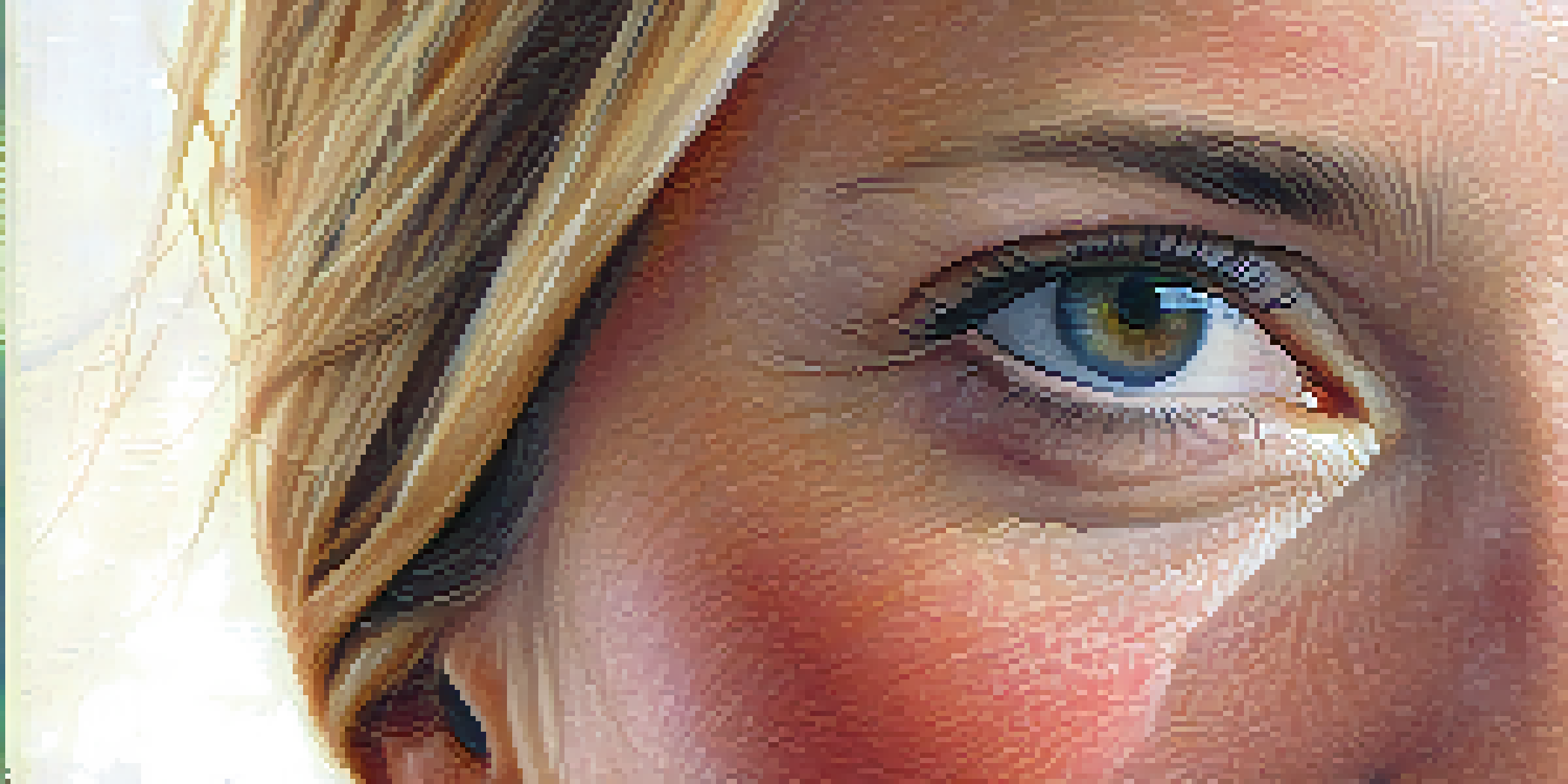Understanding Rosacea: Causes, Symptoms, and Treatments

What is Rosacea and Who Does it Affect?
Rosacea is a chronic skin condition that primarily affects the face, leading to redness and visible blood vessels. It can occur in anyone but is most common among fair-skinned individuals, particularly women aged 30 to 50. However, men can experience more severe symptoms, making it essential to recognize its signs early.
The greatest wealth is health.
Many people confuse rosacea with acne, but it has distinct features, including flushing, swelling, and sometimes even eye irritation. Understanding that rosacea can manifest differently in people is crucial in identifying this often-misunderstood condition. If left untreated, rosacea can worsen over time, significantly impacting one's quality of life.
The stigma surrounding rosacea can lead to emotional distress, making it vital to discuss openly and seek treatment options. By learning about rosacea, individuals can better manage their symptoms and reduce the embarrassment often associated with the condition.
Common Causes of Rosacea: What Triggers This Condition?
The exact cause of rosacea remains unclear, but several factors contribute to its development. Genetics play a significant role, as many individuals with rosacea have a family history of the condition. Additionally, environmental factors such as extreme temperatures, sun exposure, and humidity can trigger flare-ups.

Certain lifestyle choices may also exacerbate symptoms, including alcohol consumption, spicy foods, and stress. It's interesting to note that some people might experience rosacea flare-ups due to hormonal changes, such as those occurring during menopause. Understanding these triggers is essential in managing and preventing outbreaks.
Understanding Rosacea's Impact
Rosacea is a chronic skin condition that affects many, particularly fair-skinned women aged 30 to 50, and can lead to significant emotional distress if left untreated.
While triggers can vary from person to person, keeping a diary to track flare-ups can help pinpoint specific causes. This awareness empowers individuals to make informed decisions about their lifestyle and skin care routine, potentially minimizing uncomfortable symptoms.
Recognizing the Symptoms of Rosacea: Key Indicators
Identifying rosacea early can lead to more effective management of the condition. Common symptoms include persistent redness on the cheeks, nose, forehead, and chin, often resembling a sunburn. Additionally, tiny red bumps or pustules may appear, which can be mistaken for acne.
Your skin is your best accessory. Take good care of it.
Another indicator of rosacea is the presence of visible blood vessels, which can make the skin appear more sensitive and easily irritated. Some individuals may also experience eye symptoms, such as dryness or a gritty sensation, signaling a condition known as ocular rosacea. Recognizing these signs can prompt timely medical intervention.
It's important to note that symptoms can vary significantly among individuals. Some people may only experience mild redness, while others may have more severe symptoms that impact their daily lives. Understanding the spectrum of symptoms is crucial for effective treatment and management.
How is Rosacea Diagnosed by Medical Professionals?
Diagnosing rosacea typically involves a thorough examination by a dermatologist. During the appointment, the doctor will assess the patient's skin and discuss their symptoms and medical history. This process helps rule out other skin conditions that may mimic rosacea, such as lupus or eczema.
In some cases, the dermatologist may ask questions about lifestyle, family history, and potential triggers to better understand the condition. Unlike other skin disorders, there aren't specific tests for rosacea, so a detailed conversation about symptoms is key. The diagnosis is often based on a combination of visual assessment and patient reports.
Identifying Trigger Factors
Various factors, including genetics, environmental conditions, and lifestyle choices, can trigger rosacea flare-ups, making it essential to recognize and manage these triggers.
Once diagnosed, the dermatologist can recommend appropriate treatment options tailored to the individual's needs. This personalized approach ensures effective management of rosacea, helping patients regain confidence in their skin.
Effective Treatment Options for Managing Rosacea
While there is no cure for rosacea, several treatment options can significantly reduce symptoms and improve quality of life. Topical medications, such as creams and gels, are commonly prescribed to reduce redness and inflammation. Additionally, oral antibiotics may be recommended for more severe cases or persistent breakouts.
Beyond medication, lifestyle changes can play a pivotal role in managing rosacea. Gentle skin care routines, avoiding known triggers, and incorporating sun protection can prevent flare-ups. It's also beneficial for individuals to stay hydrated and maintain a healthy diet, which can have a positive impact on skin health.
In some instances, dermatologists may suggest laser or light therapy to treat visible blood vessels and redness. These advanced treatments can provide lasting results and help restore confidence. With a comprehensive approach, individuals can effectively manage rosacea and enjoy healthier skin.
Lifestyle Changes to Help Alleviate Rosacea Symptoms
Adopting certain lifestyle changes can significantly alleviate rosacea symptoms. One of the most effective strategies is to identify and avoid personal triggers, whether they are specific foods, environmental factors, or stressors. Keeping a journal to track flare-ups can help individuals recognize patterns and make necessary adjustments.
Incorporating a gentle skincare routine is also vital. Opting for fragrance-free and non-comedogenic products can prevent irritation and keep the skin calm. Additionally, using sunscreen daily is essential, as sun exposure is a common trigger for rosacea flare-ups.
Effective Management Strategies
While there is no cure for rosacea, effective management through a combination of medical treatments and lifestyle changes can significantly improve symptoms and quality of life.
Staying hydrated and maintaining a balanced diet rich in antioxidants can further support skin health. Foods like leafy greens, berries, and fatty fish can contribute to overall wellness and may help reduce inflammation. Ultimately, these lifestyle changes empower individuals to take control of their condition.
When to Seek Professional Help for Rosacea
Knowing when to seek professional help for rosacea is crucial for effective management. If symptoms persist or worsen despite home care and lifestyle changes, it's time to consult a dermatologist. Early intervention can prevent the condition from escalating and help individuals find appropriate treatment options.
Additionally, if rosacea starts affecting emotional well-being or self-esteem, professional guidance can be invaluable. Dermatologists can not only provide medical treatments but also offer support and resources to help individuals cope with the psychological aspects of the condition. Remember, it's okay to seek help.

Regular follow-ups with a dermatologist can help track progress and make necessary adjustments to treatment plans. By staying proactive and informed, individuals can navigate their rosacea journey with confidence and support.